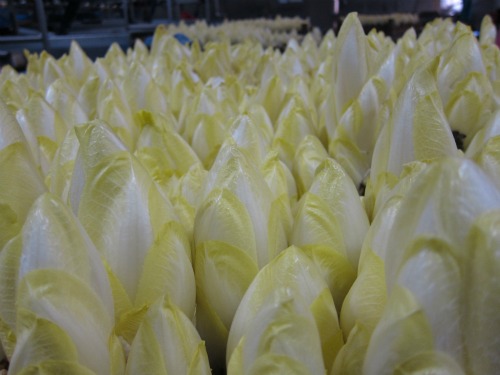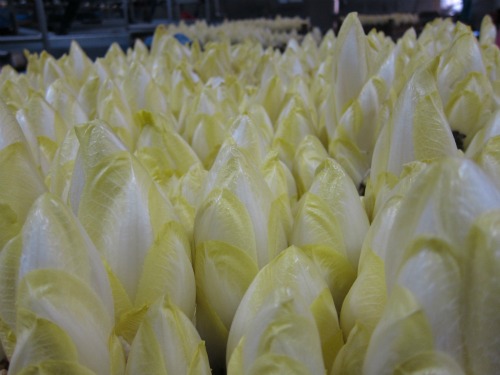Food Studies features the voices of 11 volunteer student bloggers from a variety of different food- and agriculture-related programs at universities around the world. You can explore the full series here.
 Endives. Photo: Peiwen LeeYou can’t go through culinary education without hearing about terroir both frequently and at length, and, in the New World, no other region invokes terroir more often than Northern California.
Endives. Photo: Peiwen LeeYou can’t go through culinary education without hearing about terroir both frequently and at length, and, in the New World, no other region invokes terroir more often than Northern California.
Within the borders of France, think terroir, and wine comes to mind. But, as I found out on my school field trip, terroir in Northern California has become associated with all things culinary. Although agriculture in the region ranges massive industrial factories to specialty farms, not a day of our visit went past without a discussion about a sense of place in food.
The most interesting of these conversations happened after we visited California Vegetable Specialties, the sole producer of endives in the United States. Fundamentally, endives are not “natural” agricultural produce. As owner Richard Collins explained, the vegetable is produced by creating a fabricated environment — a dark room — that tricks chicory roots into becoming white endives.
So what does — or could — terroir and a sense of place mean for California endives? After all, terroir traces the sensory influence of physical characteristics like climate and geography — but endives are produced in a forced environment rather than a natural habitat filled with what we consider the common ingredients of terroir. Nonetheless, even human-made “weather” — the precisely controlled damp, cool, darkness of the forcing room — is still weather. In fact, in many ways, it seems that the controlled physical environment in which endive is grown almost has more of an effect on its taste than the particular soil of a vineyard, for example.
Unlike many other growing operations in Northern California, endive production and its distance from traditional concepts of terroir represents to a fair extent what agriculture in Singapore can be. Medium or large-scale agriculture that relies on terroir as a key ingredient in food quality would not be viable here, given that Singapore is only 3.5 times the size of Washington D.C.. Talking with Richard Collins made me realize that things like endive-forcing or hydroponics could be opportunities for us to embrace technology-based agriculture and create a different meaning for what the taste of place represents in Singapore.
One final thing: little did we know we had been pronouncing endive wrongly all this time! The elegant vegetable is actually pronounced “on-deev”, à la française, whereas “en-dive” refers to its curly-headed, green cousins, which are grown in the light. Now we know!



